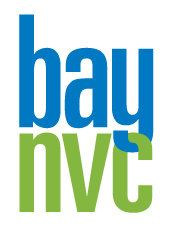by Miki Kashtan
Part 1 of this mini-series was posted on April 24, and part 2 was posted on May 2.
Many people find it challenging, almost impossible, to imagine asking for what they want in their workplace. This is especially true if they have little access to formal power within the organization. I plan to come back to the topic of power, including within organizations, in the near future. For now, I want to focus on fundamental principles that can help you in lining up resources for yourself in the workplace regardless of where you are in the organization.
Make the “Why” Clear and Relevant
By and large, the kind of requests we make in the workplace are related to our being able to work well within the environment in which we find ourselves. This will likely be either a direct connection (e.g. wanting to buy a piece of software that would make my work more effective) or an indirect connection (e.g. I want to sit ina different office where I am not so agitated about the conversations around me, which would help me feel better and hence focus and be productive).
A clear and simple principle follows from this clarity. Connecting our requests to organizational goals, including your ability to do your job is likely to increase the chances of someone saying “yes” to your request. It’s easier to hear a request when its underlying purpose is clear and connected to goals that are important to the person receiving these requests. This is especially true if the person to whom you are directing the request is in a position of authority in relation to you. If the link is not obvious, make it explicit.
Openness to “No”
Before you make a request, consider what happens if the other person say no. Even if something is deeply important to you, the essential characteristic of a request rather than a demand points precisely to the willingness, however reluctantly, to hear a no and look for other ways to get your needs met, either with this person or with others. This is critical even if you don’t have the power to “make” the other person give you what you want because you can create consequences for a “no.” Your openness to different possible outcomes results in more spaciousness for the other person. All of us, as far as I can tell, don’t like to have no options. If the other person has a clear option to say “no,” the option of saying “yes” becomes more appealing.
If you are not open to a “no,” take a moment to consider if you can let go enough to have it be a request. Sometimes bringing a bit of consciousness, and relaxing into the needs you are trying to meet with your requests, can be enough to create openness.
If you discover that you don’t have any openness to a “no,” then you are not really making a request. In that case, be honest about it, and make it clear that this is a demand, not a request. This is especially true if you are in a position to create consequences for a “no.” Most people find it very discouraging to have someone make a request and then discover when they try to say “no,” that it was a disguised demand. Remember, what makes for a request and not a demand is not how you ask. It’s only how you respond to a “no.”
Thresholds for Saying “No”
Most of the time we will be somewhere between complete openness to a “no” and being completely locked on a particular outcome. Some things are more or less important to us. How to work with that?
The first step is honesty with yourself. How important your request is for you? If what you want is not so important, make it easy for the person to say “no.” Most people find it difficult to say “no,” and you might get a “yes” that isn’t really a “yes.” To minimize this risk, you can explicitly make it easy for the person to say “no,” and use your words to create a very low threshold for them to cross. For example: “I have an idea about how we can make this work more efficiently, and I only want you to do this if you can see clearly that it will benefit you, too. Would you tell me if you have even minor concerns about participating?”
Conversely, there are times when what you want is really important to you and you may be more willing to pay the price in the other person’s goodwill. You are only open to a “no” if it’s a hardship for the other person. In that case, make it clear to the person you are asking. For example, you could say: “This is really important to me, because I don’t know how to get my tasks done without this. I would like you to do this for me even if it’s a stretch for you. Are you open to that?”
Wherever you put the threshold, and however you word your request, the biggest challenge is working out the differences if what you want doesn’t work for the other person. This brings us to another topic for another day: how to resolve conflicts within the workplace.
Friday, May 28, 2010
Subscribe to:
Post Comments (Atom)


No comments:
Post a Comment